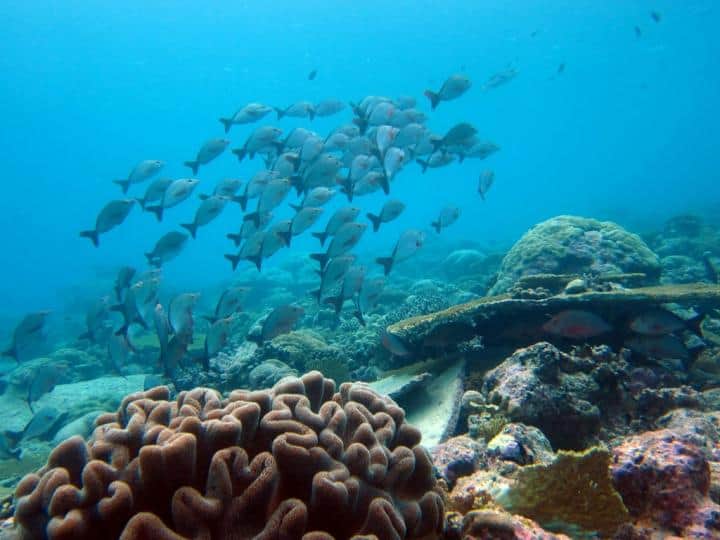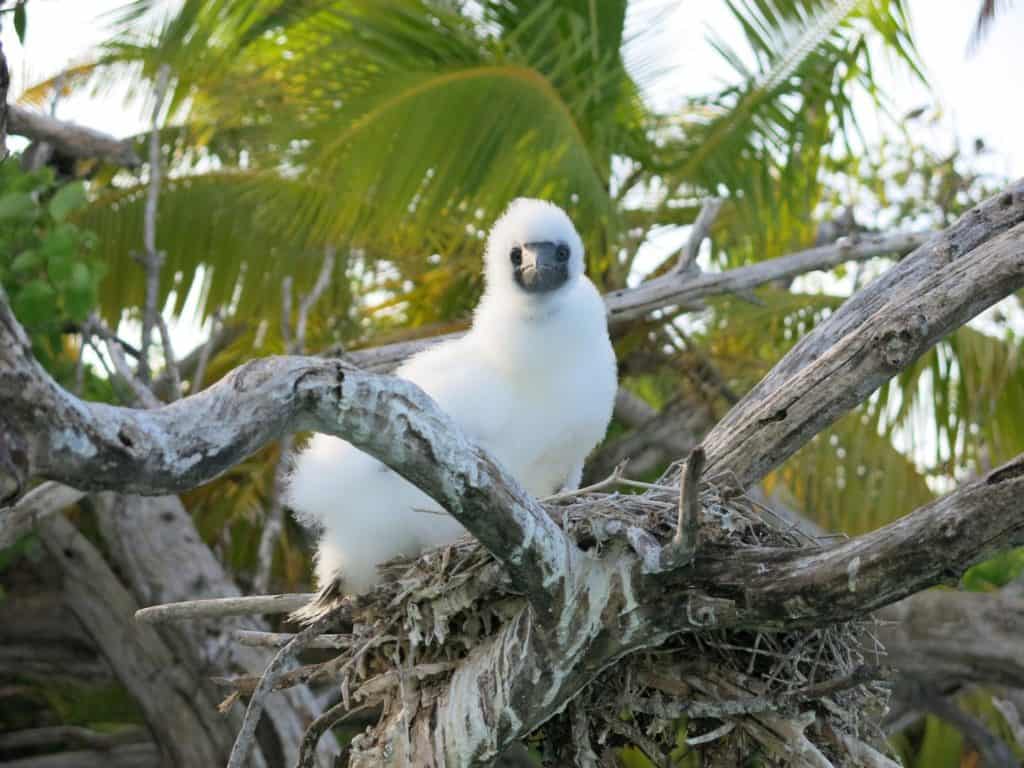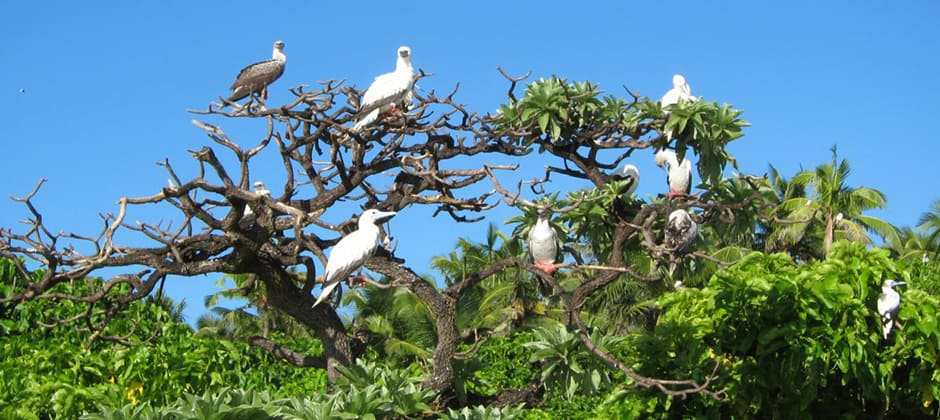Share this article
Removing rats helps islands and reefs, even in short term
After just over a decade of being rat free, islands in the Indian Ocean are already showing signs of more seabirds and more nutrients that come from them.
Several years ago, researchers had found big differences in seabird populations in islands in the central Indian Ocean. They knew that some of these islands had introduced rats and others didn’t.
Rats can be damaging to native ecosystems, but their effects can extend beyond the shoreline.
“Rats could have big negative effects on coral reefs,” said Cassandra Benkwitt, a postdoctoral researcher at Lancaster University in the U.K. “On the flipside, seabirds benefit coral reefs.” More seabirds also mean better ecosystem function, as their guano provides important nutrients that benefit fish and corals.

Paddle tail snapper (Lutjanus gibbus) rise into the water column from a coral reef in the Indian Ocean.
Credit: Professor Nick Graham/Lancaster University
Benkwitt and her colleagues then wondered how islands that once had rats but underwent eradication efforts to get rid of them fared compared to rat-free and rat-infested islands. They specifically wondered what their seabird populations looked like and whether important nutrients from those seabirds were showing up in those areas.
The diverse history of rats on 20 islands in the central and western Indian Ocean provided a good baseline for researchers to study the benefits of rat removal. “We chose these islands because they are really remote,” said Benkwitt, who led a study published in Current Biology. “They could be used as baselines or benchmarks for the region. They are protected areas quite far from human populations, so it gave us the best indication of what islands and reefs could look like without people around.”
Two of the islands that the team looked at within the Scattered Islands — Île du Lys and Tromelin —had successful rat eradication efforts about 15 years before the study. In the Chagos Archipelago, there had been a failed rat eradication campaign on one island in 2006. “Since then, there has been a push to eradicate rats again, and this has already been accomplished on a few small islands,” Benkwitt said.
To conduct the study, the team collected seabird surveys, counting the number of nesting pairs of seabirds every couple of years. To test how the coral reefs were faring and gauge the nutrients on the islands, Benkwitt and her colleagues collected leaves and soil from land, and went snorkeling and scuba diving on reefs near the islands to collect samples of algae, taking particular note of Jewel (Plectroglyphidodon lacrymatus) and Pacific Gregory damselfish (Stegastes fasciolatus) in the area. Benkwitt said damselfish and their growth rate can tell them what nutrients are in the water and what effect they have. “We wanted to see whether the number of seabirds on the island corresponded to nutrient input and whether they were being used by both the plants and animals on the land and in the ocean,” she said.
The team found that islands that never had rats had the most nutrients and the most seabirds, which was expected. Those that had rats that were not eradicated had the lowest nutrients and the least seabirds.
But more surprising was the response of islands where rats had been eradicated not too long ago. “It was a bit surprising but quite encouraging how quickly the benefit of rat eradication was shown on both land and in the ocean, especially in the Scattered Islands where rats were eradicated 15 years ago,” she said. Seabirds experienced an eight- to 10-fold increase since the eradication, including species that had once been locally extinct. “That’s really great,” Benkwitt said. “These rats were introduced hundreds of years ago, and that we’re starting to see benefits after 15 years is really encouraging.”
In terms of nutrients, Benkwitt said the rat eradicated islands were better than those with rats but still had room for improvement. Still, about 50-80% more seabird nutrients were incorporated into the areas’ soil and leaves than on rat-infested islands. In the ocean, algae and fish samples showed 15-30% more of those nutrients. They also looked at nutrient inputs at different distances to shore to determine the spatial footprint of the benefits of rat eradication. They found these benefits showed up at least 300 meters from the shore.

A booby chick sits on a nest on a rat-free island in the Indian Ocean.
Credit: Professor Nick Graham/Lancaster University
Benkwitt said while these benefits of rat removal are promising, there is still a time lag in fish growth. Damselfish grow faster around islands that never had rats compared to islands where rats are present, but they found no difference in growth between islands where rats were eradicated compared to those with rats present.
While rat eradication is more difficult on islands with lots of people, Benkwitt said, the research shows that it does have important benefits. “I would definitely recommend rat eradication in different places,” she said. “It’s this relatively easy conservation strategy that’s relatively cheap and you can do it on a fairly short time-scale. The fact that it benefits across ecosystems is really exciting. By eradicating rats on the land, you’re benefiting a ton of native species including birds, and it extends all the way out to the ocean.”
Header Image:
Red-footed boobies (Sula sula) roost on a rat-free island in the Indian Ocean.
Credit: Professor Nick Graham/ Lancaster University








